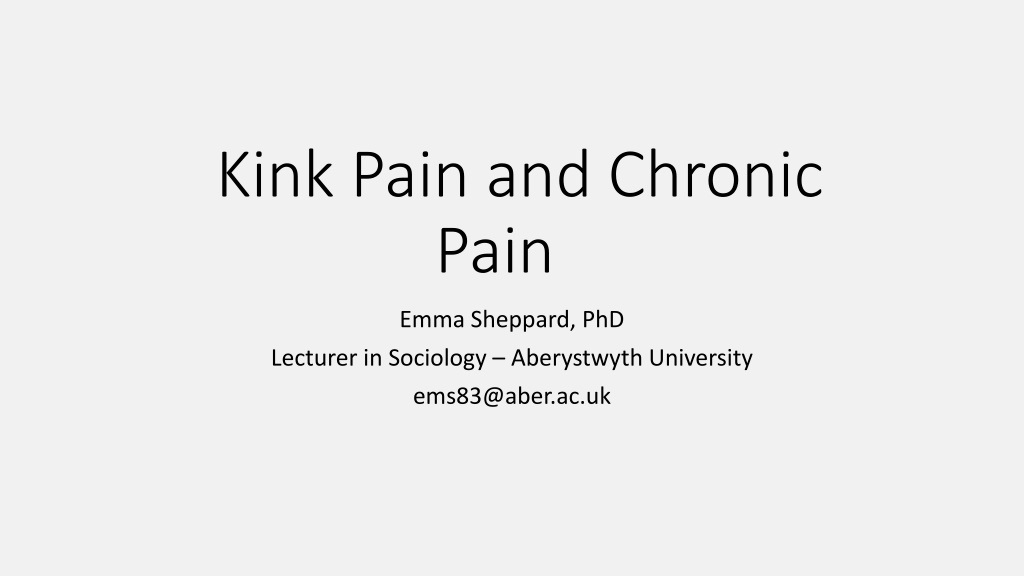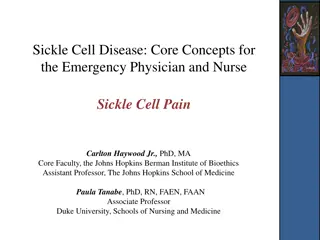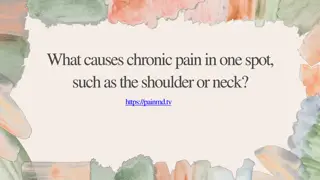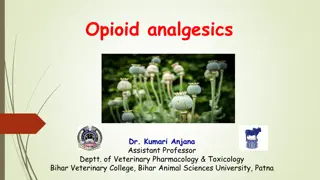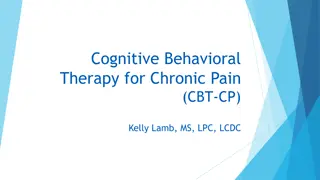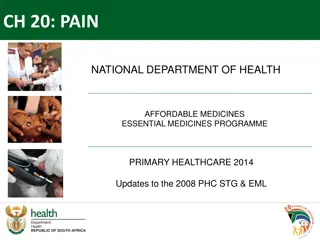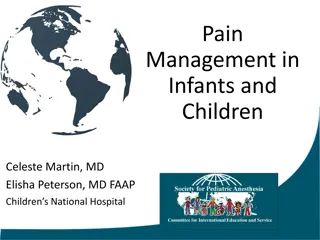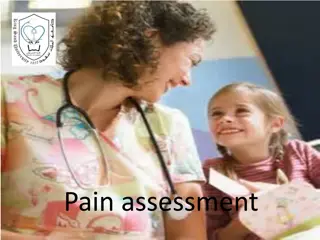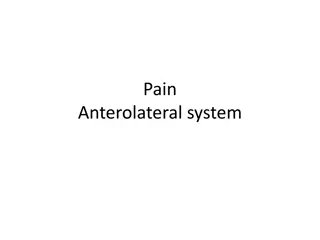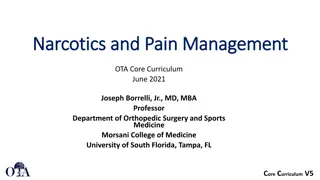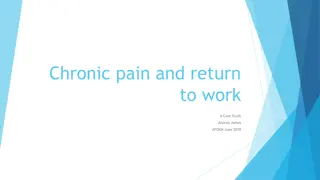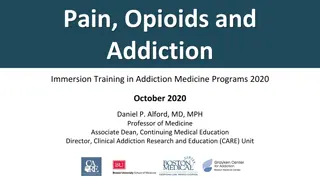Exploring the Intersection of Chronic Pain and BDSM in Critical Disability Studies
Critical Disability Studies examines power dynamics in bodily and mental norms, including the experiences of chronic pain within BDSM and erotic play. Research delves into discourses of pain, challenging assumptions and stigma associated with chronic pain and disability. The study emphasizes collaborative analysis and aims to understand the complex intersectionality between pain, ableism, and societal expectations.
Download Presentation

Please find below an Image/Link to download the presentation.
The content on the website is provided AS IS for your information and personal use only. It may not be sold, licensed, or shared on other websites without obtaining consent from the author. Download presentation by click this link. If you encounter any issues during the download, it is possible that the publisher has removed the file from their server.
E N D
Presentation Transcript
Kink Pain and Chronic Pain Emma Sheppard, PhD Lecturer in Sociology Aberystwyth University ems83@aber.ac.uk
Critical Disability Studies? a methodological approach to studying power, privilege, and oppression of bodily and mental norms which is not dependent upon the presence of disabled people, yet is informed by social perspectives, practices, and concerns about disability. (Shalk 2017) As part of and tied to disability justice/rights movements (Meekosha and Shuttleworth 2017) Interdisciplinary Social and relational approach to disability rather than viewing disability as fixed/immutable and in a binary with non-disabled broadly alighed with a postconventional theoretical approach (Shildrick 2007) as well as emancipatory approaches such as CRT and intersectionality bodyminds as socio-cultural entities Crip theory critique of normalizing tendency, drawing on queer theory (McRuer 2006; Kafer 2013) Compulsory ableism non-disabled as default setting as well as ideal
My Research How people who experience chronic pain also experience pain within BDSM and erotic play. Extended interviews with 8 disabled people who live with chronic pain Men, women, trans and non-binary gay, straight, bisexual monogamous, polyamorous, single Multiple disabilities, different diagnoses and support requirements White and mixed-race 3 interviews per participant over 12-18 months; diaries Collaborative analysis
Why BDSM and Chronic Pain Pain as somatic sensation and discursive construction (within abled heteronormativity) Exploring discourses of pain in kink and chronic pain helps unpick these despite the assumption that they are exclusive experiences Infantilisation and asexualisation and pathologisation
Living with Chronic Pain and Fatigue Ableism assumptions and expectations about how bodyminds work, and what it means to be ill, disabled, and/or in pain healthy as both default and desireable Cure/rehabilitation narrative - emphasis on cure and treatment pushes responsibility for ending pain onto the person living with pain, and ending pain is recast as a personal choice (Patsavas, 2014) Neoliberal management of self pain as personal failure Medical hero narrative Illness/disability as temporary state Experiencing pain makes us human, but being in pain makes us the abject other unwanted and monstrous Chronic pain must be lived with; normality must be performed Stigma management
Engaging the Bodymind Kink as space to deliberately engage with somatic experience the full bodymind And also space to engage positively; kink makes [Natalie] feel beautiful, physically stronger and useful both to [herself] and [her partner] (Natalie, interview 1) Making pain work for and with oneself embracing a queer/crip selfhood Kink as space in which the limitations and capabilities of the bodymind can be explored and contested
Control "Controlling pain is important. Whether that be resting to decrease some pain, using painkillers if they work, moving position at the simplest level. Kink is taking this to its natural conclusion by making pain to control." (Julie, interview 2) Controlling pain causing pain, choosing to actively engage with it, altering or stopping sensation, and controlling emotional responses to pain Demand that we control our bodies properly appropriate behaviour proper and improper times/spaces to express emotions "[Pain] doesn t necessarily impact on people in the sense that you re not going to piss on somebody s seat with your pain, but so it s slightly different, but So in some ways, there s even less scope for it to spill out, because people don t see it when it does." (Charlie, interview 2) Failure to control is horrifying for witnesses as though observing/acknowledging the expression of pain will make the pain contagious. Need for space for uncontrolled response BDSM and speaking back to pain. Pain is still painful, but also positive a conscious subverting of chronic pain through BDSM play reclaiming the self Chronic pain as reliably unreliable leads to a sense of lack of control
Future Plans A Good Life with Chronic Illness? Questioning good life but also the role of (crip) time and pleasurable activities in living with chronic illness, fatigue, and pain Imagining futures as the first step to building futures Small project creative methods Quilt square making and asynchronous discussion group
Works Cited Kafer, A., 2013. Feminist, queer, crip. Indiana UP. McRuer, R., 2006. Crip theory: Cultural signs of queerness and disability. NYU P. Meekosha, H. and Shuttleworth, R., 2009. What's so critical about critical disability studies?. Australian Journal of Human Rights, 15(1), pp.47-75. Patsavas, A., 2014. Recovering a cripistemology of pain: Leaky bodies, connective tissue, and feeling discourse. Journal of Literary & Cultural Disability Studies, 8(2), pp.203-218. Schalk, S., 2017. Critical disability studies as methodology. Lateral, 6(1). Sheppard, E., 2023. Chronic Pain, BDSM and Crip Time. Routledge. Shildrick, M., 2007. Dangerous discourses: Anxiety, desire, and disability. Studies in Gender and Sexuality, 8(3), pp.221-244.
